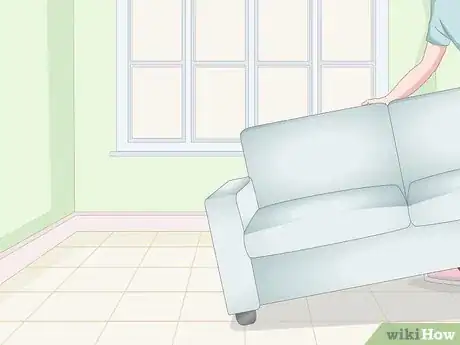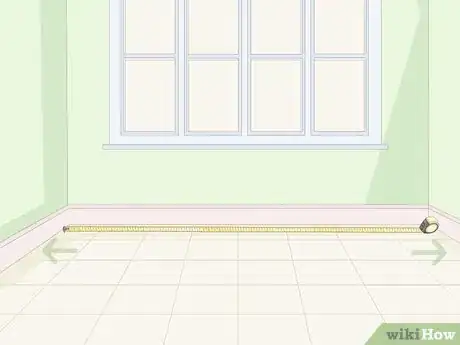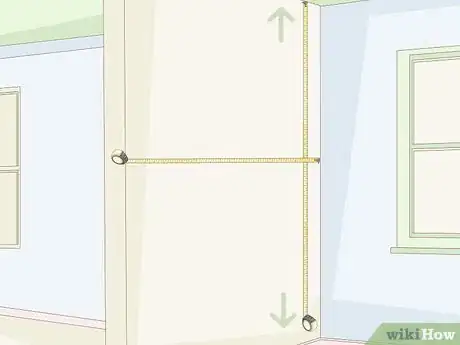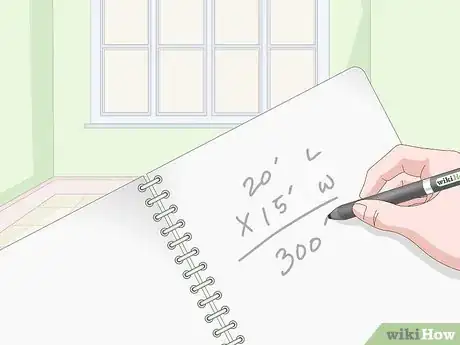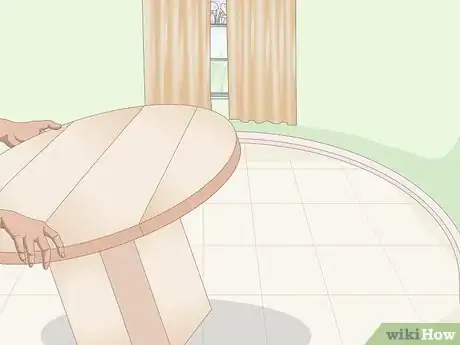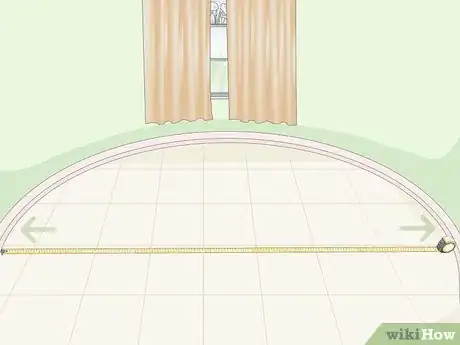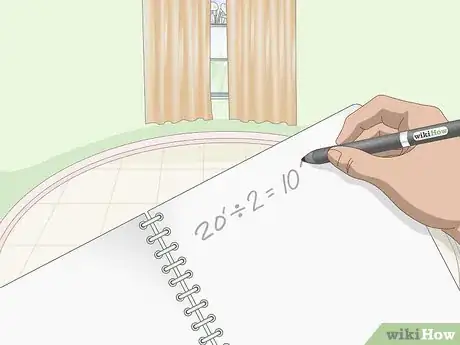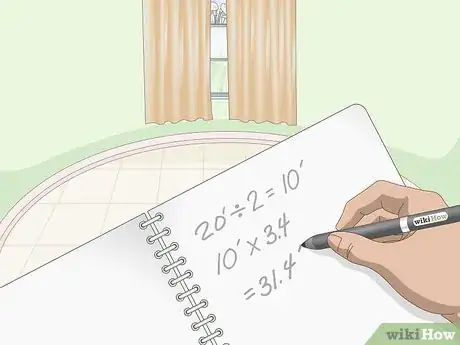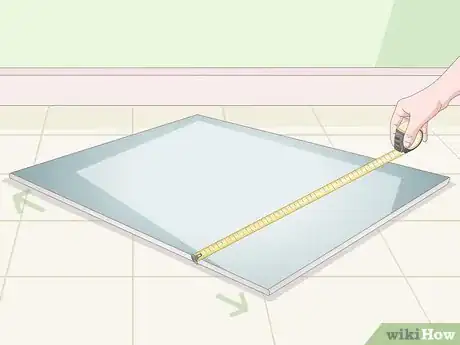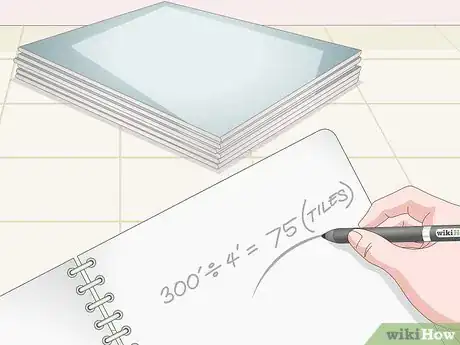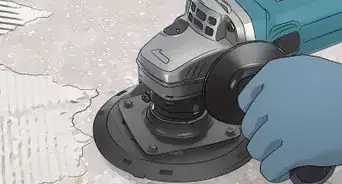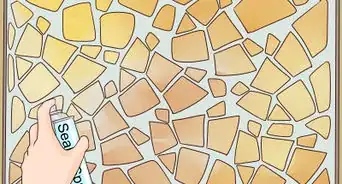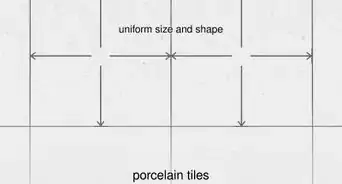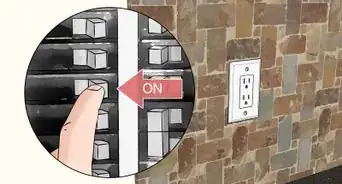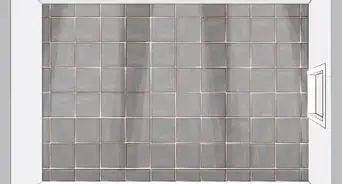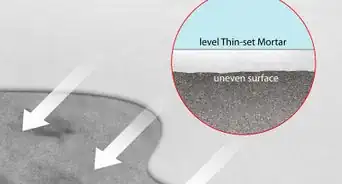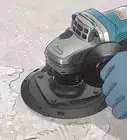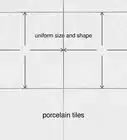This article was co-authored by Emma Oberlander. Emma Oberlander is an Interior Designer and the Owner of Otis Street Design in Boston, Massachusetts. She specializes in residential remodels, boutique hospitality design, project management, and budget design. Emma holds a BA in Communication and Media Studies from Northeastern University and an MA in Interior Architecture from The New England School of Art and Design. She has a combined ten years of project management experience in the design, marketing, and non-profit industries, both nationally and internationally.
This article has been viewed 12,473 times.
If you’re thinking of replacing, redoing, or just adding tile to your floor or wall, having an accurate measurement is key to buying the right amount of tile to get the job done. In order to accurately measure the tile you need, you need to find the square footage of the area you plan to tile. Then, you can divide that measurement by the square footage of the tiles themselves and you’ve got an accurate measurement of the tile that you need!
Steps
Measuring for a Square Area
-
1Clear the area to make it easier to take measurements. Before you take your measurements to calculate the total square footage of the room, you need to make sure the space is clear so nothing impedes your measurements. Move the furniture to the center and shoo out any pets that may get in your way.[1]
- If you plan to measure a wall, take-down any paintings, posters, or anything else that could get in the way.
-
2Use a measuring tape to measure the length of the floor. If the room is a rectangular shape, measure the longer section with a tape measure.[2] A square-shaped space would have the same length and width. If your tape measure is listed in inches, divide the total number of inches by 12 to find the number of feet. To find the number of meters, divide the total number of centimeters by 100, or move the decimal 2 places to the left.[3]
- If necessary, round the number of feet or meters up to the nearest decimal.
Advertisement -
3Take the measuring tape and measure the width of the floor. After you’ve found the length of the room, use the tape measure perpendicular across the room from where you measured the length.[4] Find the number of feet for your measurement so you can use it to calculate the square footage.[5]
- Round up to the nearest decimal if you need to.
-
4Measure the length and width of any walls you’re tiling. If you’re trying to find the square footage of a wall that you plan to tile, measure up and down to find the length. Then, measure from left to right on the wall to find the width.[6]
- Use a tape measure and make sure there aren’t any bends or folds in the tape that could affect the measurement.
-
5Multiply the length and width to get the total square footage. In order to know how much tile you’ll need to fill the space, you need to calculate the total square footage of the area. Take the length, multiply it by the width, and round up to the nearest decimal.[7]
Tip: For example, if you have a length of 20 feet (6.1 m) and a width of 15 feet (4.6 m), then you have a square footage of 300 feet (91 m).
Calculating for a Round Area
-
1Clear space in the center of the area. In order to calculate the total square footage of a round room or area, you need to be able to measure through the center of the room. Move any furniture, tables, or pets from the center so you can easily run a tape measure across it.[8]
Tip: If you can’t clear the whole area, make sure you can run measuring tape through the center without it bending or folding over an object.
-
2Stretch a tape measure through the center of the circle. Start at 1 wall and run a tape measure through the center of the area until you reach the other side. Make sure the measure is taut and there aren’t any folds or bends in it that could affect the accuracy of the measurement.[9]
- The total length through the center of the circle is called the diameter.
-
3Divide the total length by 2 to find the radius. Round up to the nearest whole number to make your calculations easier.[10]
- For example, if the diameter of the circular area is 20 feet (6.1 m), then the radius would be 10 feet (3.0 m).
-
4Multiply the radius by 3.14. To find the total square footage of a circular area, you need to multiply the radius by pi, or 3.14. Round up to the nearest decimal. You’ll need a little bit extra when you purchase your tiles anyway.[11]
- For instance, if you have a radius of 10 feet (3.0 m), then your square footage would be 31.4 feet (9.6 m).
Determining How Many Tiles You Need
-
1Multiply the square footage by 15% to account for the overage. You never want to buy just enough tile to cover the area. You may need extra tiles to fill in corners, or some of the tiles may break while you’re installing them.[12] Add 15% to your square footage calculations to account for any extra tile you may need.[13]
- Some tiles may even be broken on arrival or in the box.
- For example, if you have a square footage of 300 feet (91 m), add 15% to get a total square footage (including overage) of 345 feet (105 m).
-
2Divide your square footage by the square footage on the box. A common way to buy tiles is to buy them by the box. On the box of tile is listed the total square footage that all the tiles in the box will cover. Take this number and use it to divide the total square footage of the area where you plan to lay the tile.[14] Round up to the nearest whole number if you get a decimal.[15]
- For example, if your floor or wall has a total square footage of 300 feet (91 m) and the boxes of tile cover 50 square feet each, then you need to get 6 boxes to cover the entire area.
-
3Find the square footage of each tile if you’re buying them individually. Generally, tiles that are sold individually will list the dimensions of the tile in inches on the packaging. Take the length and width dimensions and multiply them by each other to find the area that 1 tile will cover in square inches. Then, divide that by 144 to convert it to square feet.[16]
Tip: If the tile doesn’t have dimensions listed on it, take the measurements yourself or ask an employee or salesperson to measure the tile for you.
-
4Divide your square footage by the square footage of 1 tile. Take the total square footage that you plan to tile, including the overage, and divide it by the square footage of 1 tile to determine how many tiles you need. Round up to the nearest whole number if you end up with a decimal.[17]
- For instance, if you have a square footage of 300 feet (91 m), and the tile that you’re looking at has a square footage of 4 feet (1.2 m), then you need to purchase 75 tiles to cover the area.
- Be sure to package and transport the tile carefully so it doesn’t chip or crack.
Expert Q&A
-
QuestionHow much extra tile should I buy?
 Emma OberlanderEmma Oberlander is an Interior Designer and the Owner of Otis Street Design in Boston, Massachusetts. She specializes in residential remodels, boutique hospitality design, project management, and budget design. Emma holds a BA in Communication and Media Studies from Northeastern University and an MA in Interior Architecture from The New England School of Art and Design. She has a combined ten years of project management experience in the design, marketing, and non-profit industries, both nationally and internationally.
Emma OberlanderEmma Oberlander is an Interior Designer and the Owner of Otis Street Design in Boston, Massachusetts. She specializes in residential remodels, boutique hospitality design, project management, and budget design. Emma holds a BA in Communication and Media Studies from Northeastern University and an MA in Interior Architecture from The New England School of Art and Design. She has a combined ten years of project management experience in the design, marketing, and non-profit industries, both nationally and internationally.
Interior Designer Order 10-15% extra if you're using porcelain or ceramic tile. If you're using a manmade stone like marble or travertine, order 20% extra, as these tiles are more likely to break. You should also order up to 20% extra if you're creating a complicated tile pattern like herringbone or chevron.
Order 10-15% extra if you're using porcelain or ceramic tile. If you're using a manmade stone like marble or travertine, order 20% extra, as these tiles are more likely to break. You should also order up to 20% extra if you're creating a complicated tile pattern like herringbone or chevron.
References
- ↑ https://www.bobvila.com/articles/how-much-tile-do-i-need/
- ↑ Emma Oberlander. Interior Designer. Expert Interview. 7 April 2021.
- ↑ https://www.todayshomeowner.com/how-to-lay-a-tile-floor/
- ↑ Emma Oberlander. Interior Designer. Expert Interview. 7 April 2021.
- ↑ https://www.todayshomeowner.com/how-to-lay-a-tile-floor/
- ↑ https://www.bobvila.com/articles/how-much-tile-do-i-need/
- ↑ Emma Oberlander. Interior Designer. Expert Interview. 7 April 2021.
- ↑ https://www.bobvila.com/articles/how-much-tile-do-i-need/
- ↑ https://www.bobvila.com/articles/how-much-tile-do-i-need/
- ↑ https://sciencing.com/calculate-round-area-square-feet-7286195.html
- ↑ https://sciencing.com/calculate-round-area-square-feet-7286195.html
- ↑ Emma Oberlander. Interior Designer. Expert Interview. 7 April 2021.
- ↑ https://www.todayshomeowner.com/how-to-lay-a-tile-floor/
- ↑ Emma Oberlander. Interior Designer. Expert Interview. 7 April 2021.
- ↑ https://www.bobvila.com/articles/how-much-tile-do-i-need/
- ↑ https://www.bobvila.com/articles/how-much-tile-do-i-need/
- ↑ https://www.bobvila.com/articles/how-much-tile-do-i-need/
